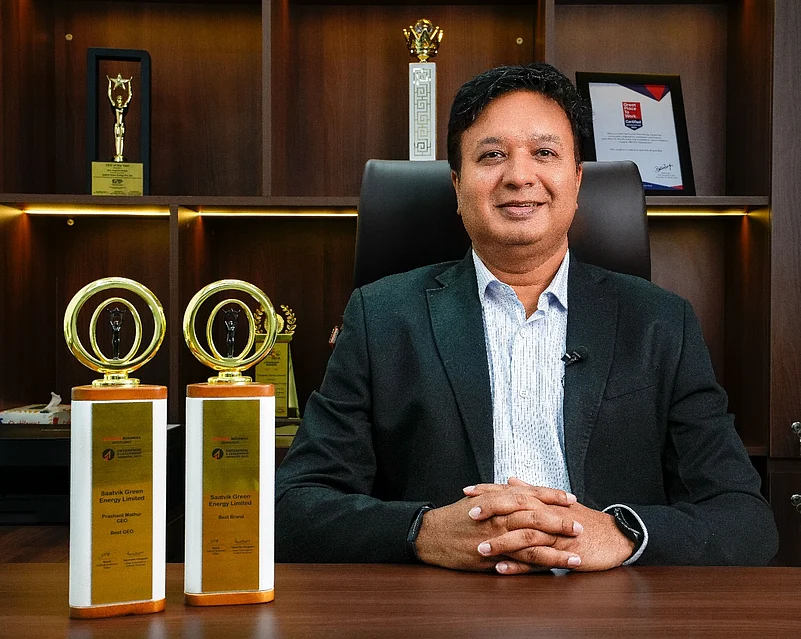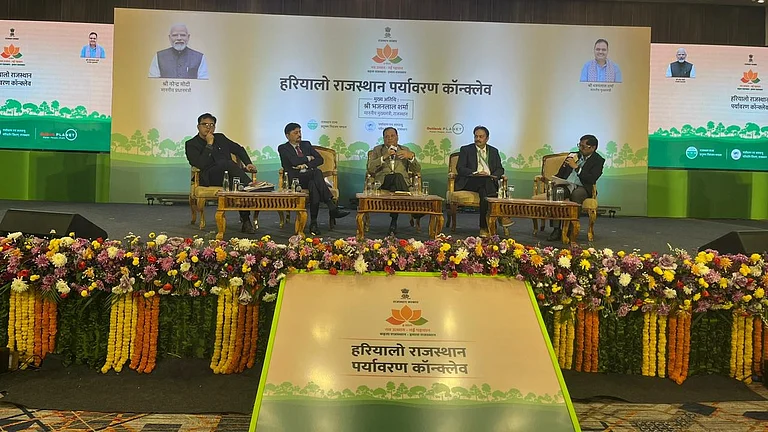These days, everyone is talking about Green and clean energy. Yet, few are talking, or even aware of, Rare Earth Elements (REEs), which are an essential element if any progress has to be made in clean energy, and where India stands as far as REE availability and usage is concerned.
What probably no one is saying is that to achieve the government’s net-zero target by 2070, India needs to ensure a reliable supply of REE along with lithium, cobalt and nickel, which act as the backbone of green technologies.
For the uninitiated, REEs are a group of 17 metallic elements found in the Earth's crust. This group includes the 15 lanthanides on the periodic table, plus scandium and yttrium, which share similar chemical and physical properties and are often found in the same mineral deposits. These REEs are crucial for producing clean energy because of their unique magnetic, phosphorescent, and catalytic properties. They enable the development of components that are smaller, lighter, more efficient, and more powerful than those made with conventional materials.
So, one thing is clear: India's clean energy roadmap will fail without REEs. It’s that simple. These 17 metals power everything from wind turbines and EV motors to defence systems and satellites. Every electric motor, every large turbine, every advanced battery needs REEs. The global battery market is expected to cross $116 billion by 2031, and EVs will make up 58% of global vehicle sales by 2040. But without control over these inputs, our ambitions mean nothing. We’ll be left importing critical components while others control the supply, the price, and the pace of innovation.
Today, China controls nearly 70% of REE mining and over 85% of global refining capacity. India, by contrast, holds only 8 per cent of the world’s rare earth element reserves, according to a CareEdge report released on July 08, 2025, but contributes less than 1% to mining.1
But the world is open for India with abundance in opportunities. According to the International Energy Agency, China’s projected share is expected to decrease to 51 per cent in mining and from 90 per cent to 76 per cent in refining by 2030.1
Obviously, India needs to grab this opportunity as the global energy transition is already in motion, and if we don’t secure access to REEs, we won’t just fall behind, we will be out of the race. India has already missed the semiconductor bus, so we cannot afford to miss the REE shift. Not when the stakes are this high.
The National Critical Minerals Mission
In 2025, India launched the National Critical Minerals Mission (NCMM), a government initiative aimed at securing a sustainable supply of critical minerals for India's growing needs in key sectors like clean energy, defense, and electronics. The mission, started with Rs. 16,300 crore (~$1.9 bn) to build capabilities across exploration, mining, processing, and recycling, aims to reduce India's reliance on imports of critical minerals, especially from China, which dominates the global supply chain. The Geological Survey of India will conduct 1,200 exploration projects over six years, with in‑situ discovery in Rajasthan alone reaching 111,845 t REO. However, intention without speed, execution, and private sector alignment will not move the needle. We need a mission-mode approach across ministries, states, and industry to explore, extract, refine, and recycle.
The policy playbook must now translate to hard output: domestic refining facilities, rare earth processing corridors, and strategic partnerships with mineral-rich countries. India should aim to reduce dependence and dominance in selective value chains.
Mining Without Refining Is Worthless
India’s reserves won’t help unless we crack processing. Rare earths are useless in raw form. The separation and purification process is complex, expensive, and currently controlled by China. Unless India builds refining infrastructure at scale, we’ll be exporting raw ore and importing back finished products, a value drain we can’t afford.
The solution? Build end-to-end refining ecosystems with tech transfer, R&D incentives, and global joint ventures. Treat this like we treated space and nuclear in earlier decades as a strategic national capacity.
Sustainability Can’t Be An Excuse to Stay Passive
Yes, rare earth mining has environmental risks. India has the 5th largest e‑waste volume (>10 billion devices) and looming EV battery disposal. The answer lies in building closed-loop supply chains — mine responsibly, refine efficiently, and recycle at scale. India must become a leader in rare earth recycling, not just to reduce imports, but to create jobs, technology, and new value chains.
Stop Waiting. Start Building.
We are out of excuses. We have the reserves, the talent, the demand and now, finally, the policy framework. What we need is speed and seriousness. India cannot afford to approach rare earth strategy in silos or slow phases. It must have a full-spectrum push initiated by grips of rapid exploration through fast-tracked auctions, public-private survey models, and tapping offshore mineral zones. At the same time, capacity-building for refining must be constructed from the very base with pilot plants, joint ventures, and selective technical collaborations.
And the areas are already identified. According to the 2023 Indian Minerals Yearbook, India has 130 recognized REE deposits of which the coastal states of Tamil Nadu, Kerala, Andhra Pradesh, and Odisha have the most concentrated deposits. The recent curbs by China on REE exports have made Indian Rare Earths Limited (IREL), a central government undertaking, consider reducing its exports to save rare earths and expand domestic processing.
Magnet production must start. There needs to be incentives for private players and original equipment manufacturers (OEMs) to bring supply localization into their companies. Recycling initiatives must then be activated at all costs with financial backing, regulations, and reverse logistics. Finally, India needs to cement global relationships with mineral-rich nations such as Australia, the US, and the Central Asian countries to safeguard supply and build geopolitical leverage. Anything less will keep us forever chasing after a race we ought to be leading.
If We Miss This Bus, We Lose More Than a Market
China’s grip will only ease if global supply chains shift. And it is already happening. India must claim its share, not wait. Private players must stop waiting for incentives to fall into place. Begin building pilot refineries. Start investing in rare earth metallurgy. Partner globally, but build locally.
Without rare earth security, we will remain import-dependent, vulnerable to supply shocks, and irrelevant in clean-tech manufacturing. Our ambitions around EVs, solar equipment, and battery storage will always benefit someone more other than us.
This is not a side issue. It is the backbone of every future technology. Treating rare earths as optional is dangerous. India must act, not as a participant, but as a leader setting the terms.
The time for caution is over. It is time for execution and for biting the bullet.
About Mr. Prashant Mathur

Mr. Prashant Mathur is the Chief Executive Officer of Saatvik Green Energy Limited. He brings over 20 years of experience in the renewable energy sector. Throughout his career, he has demonstrated strong commercial acumen and a deep understanding of scaling businesses across domestic and international markets. Prior to joining the Company, he held leadership roles at Mundra Solar PV Limited (formerly Adani Solar), Vikram Solar Private Limited, Targray India Private Limited, and Solis Solar Group. Since joining Saatvik Green Energy Limited, Mr. Mathur has spearheaded key strategic initiatives, resulting in exponential sales growth, diversification into new business verticals, and significant operational expansion.





















